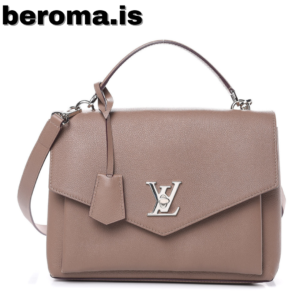 The allure of luxury fashion is undeniable. It speaks to an image, a lifestyle, an ideal – and for many, it’s an aspiration that transcends mere clothing. However, within the gilded halls of fashion powerhouses such as Louis Vuitton, Chanel, and Hermès, a quiet revolution is underway, threatening the very ethos of luxury. We’re talking about “super fakes” – a term that has sent ripples through the industry and left a puzzle for the luxury shopper, the fashion enthusiast, and sustainability proponents alike.
The allure of luxury fashion is undeniable. It speaks to an image, a lifestyle, an ideal – and for many, it’s an aspiration that transcends mere clothing. However, within the gilded halls of fashion powerhouses such as Louis Vuitton, Chanel, and Hermès, a quiet revolution is underway, threatening the very ethos of luxury. We’re talking about “super fakes” – a term that has sent ripples through the industry and left a puzzle for the luxury shopper, the fashion enthusiast, and sustainability proponents alike.
In this extensive exploration, we peel back the layers of what super fakes are, the shadows they cast across the fashion industry, and the pivotal role each of us plays in steering the needle toward more ethical and sustainable consumption.
Defining “Super Fakes”
The term “super fakes” refers to counterfeit luxury products that are so well-made, substantial, and expertly marketed that they are often indistinguishable from the real deal. Gone are the days of easily spotted knockoffs; today’s super fakes carry genuine-looking serial numbers, impeccable craftsmanship, and high-quality materials, making it an almost impossible feat to tell them apart from authentic goods.
Luxury brands like Louis Vuitton, Gucci, and Yves Saint Laurent have seen their designs recreated with such precision that even their own experts have struggled to identify the fakes from their originals. The price tags are the only clear giveaway; super fakes are sold at a fraction of the cost of an authentic luxury item – a lure hard to resist even for an ethical shopper.
The Impact of “Super Fakes” on the Fashion Industry
The presence of super fakes is a double-edged sword slicing through the luxury fashion world. On one side, it poses a significant economic threat to legit luxury brands and retailers. Counterfeits not only erode brand value but also siphon off profits. The investment in design, innovation, and marketing attributed to the original is lost, undermining the very foundation of the luxury market.
Ethically, the super fake phenomenon raises questions about labor practices in the counterfeit industry. Reports frequently emerge that link these operations to sweatshop conditions and even to funding more sinister activities. Enormous environmental impact also arises, as the high-quality materials involved are not ethically sourced or disposed of.
On the flip side, the very existence of super fakes engenders an emphasis on authenticity, driving luxury brands to secure their supply chains more rigorously and potentially lead to a cleaner, fairer industry.
The Consumer Dilemma
Why do consumers buy super fakes? The answer is not merely an issue of price. Often, it’s about exclusivity and identity. The genuine item can serve as a status symbol – a tangible marker of personal success and taste. Yet, for consumers with a budget, or a desire to ‘try on’ the image without the full investment, super fakes offer a seemingly irresistible compromise.
The quality conundrum is also at play. While the ethical and arguably superior choice would be to invest in a real luxury product, super fakes often deliver a comparable quality at a significantly lower price, blurring the lines for thrifty consumers who might not consider the ethical implications of their purchase.
Combatting “Super Fakes”: Industry and Consumer Solutions
Luxury brands have employed various tactics to combat super fakes, from legal crackdowns on counterfeit traders to investing in advanced authentication technologies. For instance, blockchain is being adopted to provide a transparent chain of custody, enabling consumers to trace each item to its origin.
But the onus is not solely on the fashion giants. Sustainable and ethical consumption begins at the individual level. By choosing to support genuine luxury brands, consumers can make a powerful statement about their values and contribute to a more transparent and eco-friendly industry.
To detect super fakes, informed consumerism is essential. Education on brand details, methodologies, and materials is paramount in the fight against counterfeits. Fashion enthusiasts must be willing to invest time and passion into understanding the objects of their affection, allowing them to appreciate not only the aesthetic value but the heritage and stories behind their chosen brands.
The Importance of Ethical and Sustainable Fashion Practices
Supporting authentic luxury items does more than just ensure quality – it upholds the integrity of the fashion industry. By choosing genuine over counterfeit, we are safeguarding the investment in creativity and innovation that makes fashion such a vibrant and culturally significant field.
Furthermore, this act aligns with growing consumer demands for sustainable practices. Ethically-made luxury items promote a supply chain that upholds human rights and environmental welfare. This, in turn, encourages an industry standard that values the artisans and workers who are often the unsung heroes behind these revered brands.
Conclusion
The rise of super fakes in the luxury fashion industry may appear to complicate the identities of both luxury items and their consumers. However, by shining a light on this issue, we are reminded that fashion is more than just a transaction or a trend; it’s an ecosystem where our choices echo in every soul and stitch involved.
Our call to action is clear – as designers and fashion mavens innovate, as brands evolve, and as enforcement tightens its grip, we, the consumers, have the power to continue this momentum. Each conscious purchase brings us closer to a fashion world built on authenticity, ethics, and sustainability. It’s a world far more luxurious than any super fake could promise, and one that we can collectively create with every thoughtfully selected garment.